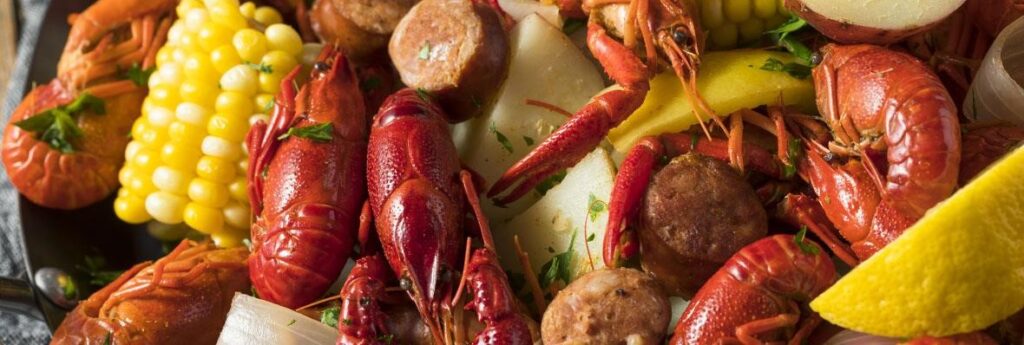With a head-spinning array of unique and inspiring choices, the answer to the question, “What should I eat in New Orleans?” is really another question: What shouldn’t I eat? And the answer to that is, essentially, nothing! It’s pretty much all amazing, and a foodie, casual or serious, can’t really go wrong in one of the world’s greatest food cities.
Indeed, like in few other locales, food is omnipresent in the Big Easy, energized by a collection of local and international chefs that have turned the Louisiana city into a mouth-watering mecca of both modern and traditional fare, served up from street level in the famous French Quarter to restaurants known around the world, such as Antoine’s, Arnaud’s, Broussards, and Brennan’s.
With historic French and creole roots, New Orleans food is literally a gumbo of inspirations and flavours aggregated from Paris to Port au Prince and from Cadiz to the Congo, served up at over a thousand restaurants.
And if that isn’t enough, there are plenty more authentic restaurants on the outskirts of the city in Plantation Country, stretching along the Mississippi River, the bayou region, or around Lake Pontchartrain.
A great way to see what’s cooking in town is through a food tour (we recommend Doctor Gumbo, but there are others) which may include a visit to a confectionary (for the pralines), hot sauce shop, bar (Tujague’s, which claims to have invented the Grasshopper cocktail), and of course restaurants serving the likes of PoBoy sandwiches, local seafood dishes (like catfish, shrimp, or crawfish), and beignets – those famous New Orleans powdered fritters.
Consider this sampler menu of must-eat New Orleans/Louisiana fare:
Gumbo – The quintessential New Orleans dish, gumbo is a thick stew served over rice and made with a roux (a mixture of butter and flour) and a wide variety of ingredients such as celery, peppers, okra, onions chicken, sausage and/or seafood. Family recipes for the dish are treasured and passed down for generations leading to disputes over the best way to cook it. The only thing that’s not in dispute is how good it is.
Crawfish Étouffée – Another delicious local stew, étouffée (eh-too-fey, meaning “to smother”) is crammed full of crawfish (or shrimp), seasoned to perfection with creole spices, and served over rice. Unlike gumbo, étouffée is often made with a “blonde” roux, giving it a lighter colour and a very different, almost sweet flavour, that’s hard to forget.
Jambalaya – A culinary staple and storied dish in New Orleans, jambalaya dates to the area’s colonial Spanish settlers attempting to reconstruct their native paella from locally-sourced ingredients. Today, the dish is comprised of a mix of chicken, seafood, sausage – or all three! – plus peppers, onions, other vegetables, spices, and rice combined in a variety of ways. Try it at Jacque-Imo’s, Acme Oyster House, Mother’s, or Napoleon House Bar & Café.
Red beans and rice – As common for New Orleanians as bacon and eggs, the dish can include almost any meat – from ham hock to sausage to pickled pork – placed in the pot along with red or kidney beans and spices like bay leaves, thyme cayenne pepper and sage, and set to simmer on the stove for two hours or six. It’s a household staple, but many of the city’s best restaurants keep it on their menu.

PoBoy – Like a sub, the PoBoy (poor boy) sandwich is traditionally stuffed with tasty fillings like roast beef, fried shrimp, oysters, or catfish, and garnished with lettuce, tomato, and pickles, then slathered with sauce or mayonnaise, and served between two long pieces of French bread. Our go-to is Johnny’s in the Quarter (be advised, it closes before 5), but there are dozens of options around town, some taking the PoBoy in creative new directions (such as Korean pork). Not sure where to go? Ask a local – everyone has a favourite place.
Muffulettas – This famous Italian-style sandwich was invented in New Orleans in 1906, credited to Lupo Salvadore at the Central Grocery on Decatur. The establishment is still serving the original version of the sandwich, made with cured meats (ham and salami), provolone cheese, olive dressing, and spices on a sesame-seed roll big enough for sharing. It has become a quintessential must-try food when visiting New Orleans.
Boudin – Pronounced boo-dan, this tasty delicacy originated in western Europe, but was perfected in Louisiana’s Cajun Country. The sausage-like meat dish includes a pork rice dressing is stuffed into pork casings, along with pork meat and herbs. Other varieties include alligator, crawfish, or shrimp, and can be mild or spicey.
Seafood – Boiled crawfish in season, blackened catfish, fried oysters, and barbecued shrimp top the list of local options, but there is a wide variety of choices, and ways of preparation, to satisfy any seafood connoisseur.
Hot dog – In New Orleans, even a typical hot dog – the most ordinary of foods— tastes better. Like the phenomenal frankfurters at Dat Dog (three locations) – alligator-based and loaded with jalapeños, grilled onions, and a spicy creole mustard for an extra kick.
Beignet – The famed doughnut without the hole is one of the city’s most famous food items – ideal for breakfast, dessert, or a midnight snack – available 24-hours a day at various coffee hotspots. Introduced by French-Creole colonists in the 18th century, the concept is simple: fried dough covered with mounds of powdered sugar served hot and best accompanied by café au lait or chocolate milk. Café du Monde in the French Quarter is the oldest and most iconic beignet shop, but several other cafés have become local favourites, such as Café Beignet and Loretta’s Authentic Pralines for their praline-filled beignets.

Bananas Foster – The decadent dessert was invented by chef Paul Blange at Brennan’s Restaurant in the 1950s to promote a new fruit in town: bananas! Sautéed in butter, sugar and cinnamon and then bathed in rum, the dish is set aflame (tableside) to burn off the alcohol in the rum, leaving a smoky taste and rum flavour. Served over vanilla ice cream, the dessert is synonymous with New Orleans and it would be bananas not to try one when in town.
Food tours, of course, are conducted by knowledgeable guides, brimming with information, history, and a ton of amazing foodies facts, such as that New Orleans cuisine is a blend of mainly French, Spanish, and African cooking styles modified through the addition of influences from the city’s many multi-ethnic settlers.
And historically, the geography of the city itself – situated as it is essentially in the middle of a swamp – also played a part. For example, since carrots don’t grow in bogs, early French settlers were forced to use green peppers instead, which, with celery and onions, eventually became the foundation of creole cooking.
However, mostly what you learn in New Orleans, whether on a food tour on or on your own is, like the slogan of famed city steak house Ruth’s Chris says, “Come hungry, darling!”

